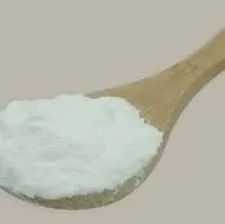The Chemical Used to Disinfect Drinking Water
Disinfection is a crucial process in ensuring that drinking water is safe for human consumption. One of the most common and effective chemicals used for this purpose is chlorine. Chlorine has been a standard disinfectant for drinking water for over a century, playing a significant role in public health by effectively eliminating pathogens that can cause waterborne diseases. However, understanding the chemistry behind chlorine disinfection, its advantages, and some of the challenges associated with its use is essential for appreciating its role in water treatment.
The Chemistry of Chlorine
Chlorine is a chemical element with the symbol Cl and atomic number 17. In its elemental form, chlorine is a yellow-green gas that is highly reactive. For water disinfection, chlorine is typically used in the form of sodium hypochlorite (bleach) or calcium hypochlorite. When chlorine is added to water, it undergoes a series of reactions that lead to the formation of hypochlorous acid (HOCl) and hypochlorite ions (OCl-), both of which are powerful disinfectants.
The primary mechanism through which chlorine disinfects water is by penetrating the cell walls of pathogens, including bacteria, viruses, and protozoa. Chlorine reacts with the proteins and enzymes within the cells, effectively killing or inactivating these microorganisms. This process is crucial in preventing outbreaks of diseases such as cholera, typhoid fever, and dysentery.
Advantages of Using Chlorine
Chlorine disinfection offers several advantages. Firstly, it is cost-effective and readily available, making it a popular choice for water treatment facilities worldwide. Additionally, chlorine is effective against a wide range of pathogens, making it suitable for various water sources, whether it is surface water, groundwater, or even wastewater.
what chemical is used to disinfect drinking water

Chlorine also provides residual disinfection. After the initial treatment, small amounts of chlorine remain in the water as it travels through the distribution system. This residual helps to prevent recontamination, ensuring that the water remains safe until it reaches consumers. The ability of chlorine to maintain a disinfectant presence in the distribution system is one of the key reasons for its continued use.
Challenges and Concerns
Despite its many benefits, the use of chlorine in water disinfection is not without concerns. One of the main issues is the formation of disinfection by-products (DBPs), which occur when chlorine reacts with organic matter in the water. These by-products, such as trihalomethanes (THMs) and haloacetic acids (HAAs), have been linked to health issues, including an increased risk of cancer and reproductive problems. As a result, water treatment plants must carefully monitor and manage chlorine levels to minimize DBP formation.
Another challenge is the resistance of some microorganisms to chlorine. While chlorine is effective against many pathogens, certain protozoa, such as Cryptosporidium, are resistant to chlorine disinfection. This has led to the exploration of alternative disinfection methods, such as UV radiation and ozone, which can be used in conjunction with chlorine to enhance water safety.
Conclusion
In summary, chlorine remains a cornerstone of drinking water disinfection due to its effectiveness, cost-efficiency, and ability to provide residual protection. While there are challenges associated with its use, particularly concerning disinfection by-products and certain resistant pathogens, ongoing research and advancements in water treatment technologies continue to address these issues. Understanding the role of chlorine in making drinking water safe is vital to public health, ensuring that communities have access to clean and safe drinking water. Balancing the benefits and drawbacks of chlorine disinfection is essential for maintaining water safety in the face of evolving water quality challenges.

